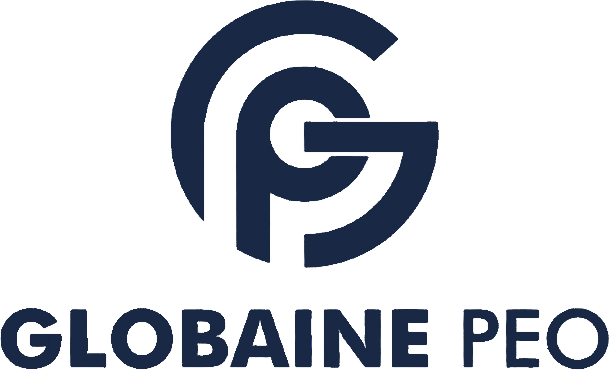As an employer expanding into Germany, it’s crucial to comply with local labor laws and prepare the right documentation for a smooth onboarding process. This guide outlines the key steps and documents required for onboarding employees in Germany.
Onboarding Process: Step-by-Step Explanation
Step 1: Job Offer and Acceptance 📩
Trigger: After selecting the candidate post-interview.
Action: Issue a formal job offer that outlines key employment terms such as:
Job Title: [Position Title]
Compensation: €[Salary Amount], ensuring compliance with German minimum wage laws, which currently stand at €12.00 per hour as of 2024 .
Start Date: [Start Date], allowing for adequate time to complete notice periods and other onboarding processes.
Working Hours: Typically 40 hours per week, in line with German labor laws, with clear conditions regarding overtime. Employees are entitled to at least 20 days of paid vacation per year .
Outcome: Once the candidate accepts the offer, the onboarding process officially begins.
Step 2: Employment Contract 📝
When It’s Used: After job offer acceptance.
Action: Draft and sign a comprehensive employment contract that includes:
Job Duties: A detailed description of the role, responsibilities, and performance expectations.
Salary & Benefits: Clearly state salary, bonuses, allowances, and benefits such as health insurance, pension contributions, and any additional perks .
Termination Clauses & Notice Periods: Outline conditions for termination and the required notice period, typically four weeks for employees with less than two years of service .
Probation Period: Generally lasts between 3 to 6 months, allowing for performance review.
Outcome: Both parties sign the contract, formalizing the employment relationship.
Step 3: Registration with Social Security and Health Insurance 📄
Legal Requirement: German employers must register employees with the relevant social security systems.
Action:
Health Insurance: Register employees with a health insurance provider of their choice, which is mandatory in Germany. The employee can choose between public (gesetzliche Krankenversicherung) or private (private Krankenversicherung) health insurance .
Social Security Contributions: Employers contribute approximately 20-22% of the employee’s gross salary towards social security, which includes health insurance, pension, unemployment, and long-term care insurance .
Outcome: Employees are registered, ensuring compliance with social security laws.
Step 4: Tax Number Registration 💳
Purpose: Ensure accurate tax deductions from the employee’s salary.
Action: Register the employee for an Income Tax Identification Number (Steueridentifikationsnummer) with the Federal Central Tax Office (Bundeszentralamt für Steuern). This requires submitting personal identification and completing necessary forms .
Outcome: A tax number is assigned to the employee, ensuring compliance with German tax regulations.
Step 5: Personal Identification Documents 🔍
Purpose: Confirm the employee’s identity and work eligibility.
Action: Collect necessary documents, such as:
ID Document: German citizens must provide their national ID or passport.
Work Visa (for foreign nationals): Ensure foreign employees have a valid work visa, such as a Blue Card for skilled workers or other appropriate permits.
Outcome: The employee’s identity and work eligibility are verified.
Step 6: Employee Handbook Acknowledgment 📚
Purpose: Ensure the employee understands company policies and their rights.
Action: Provide an employee handbook covering:
Work Hours & Overtime: Specify the company’s work hours and overtime policies, adhering to the Working Hours Act (Arbeitszeitgesetz).
Leave Policies: Detail annual leave, sick leave, and public holidays (in accordance with the Federal Holiday Act).
Health & Safety Policies: Compliance with the Occupational Safety and Health Act (Arbeitsschutzgesetz).
Outcome: The employee acknowledges receipt of the handbook, ensuring awareness of company policies.
Step 7: Emergency Contact Information Form 🚑
Purpose: Ensure preparedness for emergencies.
Action: Request emergency contact details, such as:
Name
Relationship
Phone Number
Outcome: Emergency contact information is securely recorded for quick access if needed.
Step 8: Bank Account Information Form 🏦
Purpose: For salary payments through direct deposit.
Action: Collect banking details, including:
Bank Name
Account Number
Outcome: The employee’s salary is deposited directly into their account, ensuring efficient payment processing.
Step 9: Non-Disclosure Agreement (NDA) 🔒
Purpose: Protect the employer’s confidential information.
Action: Have the employee sign an NDA that outlines their obligations to maintain confidentiality regarding the company’s sensitive information.
Outcome: The employee agrees to protect the employer’s intellectual property and trade secrets.
Step 10: Work Visa (for Foreign Employees) 🌍
Purpose: Ensure legal work authorization for foreign employees.
Action: Assist foreign employees in obtaining the necessary work visa, such as the EU Blue Card or other work permits.
Outcome: The employee is legally authorized to work in Germany, avoiding compliance issues.
Conclusion: How GlobainePEO Can Help with Onboarding in Germany🌐
GlobainePEO specializes in managing all aspects of employee onboarding in Germany, from drafting compliant contracts to ensuring social security registration and legal work permits. Partnering with GlobainePEO ensures smooth onboarding while you focus on growing your business.

